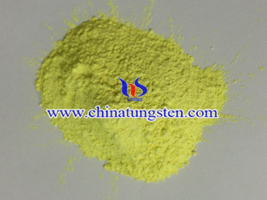The Greenest Shanghai Tower May Use Tungsten Trioxide
- Details
- Category: Tungsten's News
- Published on Monday, 05 September 2016 11:15
Shanghai Tower, located in Shanghai Lujiazui Finance and Trade Zone, has ready to officially open this month. This tallest building of 632 meters in China is the world's second highest building which is second only to 828 meters of Dubai’s Burj Khalifa. Shanghai Tower is known as the greenest building, which sets collecting rainwater, wastewater recycling, cooling and heating system ect in one, and meets the requirements of more sustainable urban development, which may be the only skyscraper in the pioneer obtained Platinum Award.


In order to reduce wind load of the super-tall buildings, Shanghai Tower is designed to be twisted 120 degrees; at the same time, the glass curtain wall outside the building is set with a double protection function. The first line of defense is the application of ultra-white glass with blew rate closed to zero. The second line of defense is adding structural adhesive in the outer glass curtain wall, thereby even if the glass slowly under vigorous hammer test rupture, all the pieces can be firmly attached to the film and will not result in a "glass rain". The double glass design of Shanghai Tower can not only improve its beauty, but also play the role of b thermal insulation to ensure the building cool in summer and warm in winter, just like a very large thermos bottle, and also to reduce wind speed. It is reported that Shanghai Tower is possible to use the most advanced of intelligent building based glass which manufactures in tungsten trioxide and other chemicals, thus to isolate and protect the indoor temperature from external influences and further reduce energy consumption measures to maximize.
The band gap of tungsten trioxide (WO3) is 2.4~2.8eV, which exhibits good absorption property in ultraviolet and infrared wavelengths, and thus to be widely studied in the academic community as a semiconductor insulating material. Numerous studies have shown that the surface plasmon resonance of semiconductor materials will absorb specific wavelengths of light. Further, after a certain reduction treatment or the addition of third phase cation of tungsten trioxide nanoparticles, a large amount of free electrons will be gathered on its surface, and thereby to has the property of plasmon resonance absorption of near-infrared light.
| Tungsten Oxide Supplier: Chinatungsten Online www.tungsten-oxide.com | Tel.: 86 592 5129696; Fax: 86 592 5129797;Email:sales@chinatungsten.com |
| Tungsten News & Prices, 3G Version: http://3g.chinatungsten.com | Molybdenum News & Molybdenum Price: http://news.molybdenum.com.cn |



 sales@chinatungsten.com
sales@chinatungsten.com